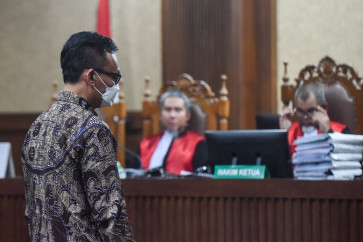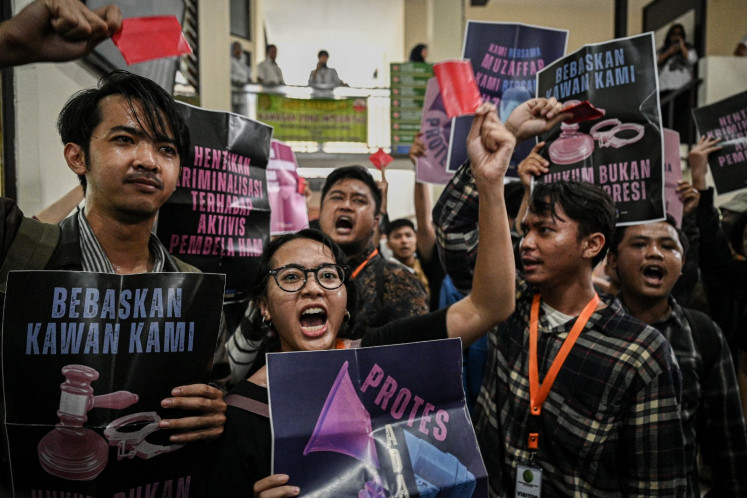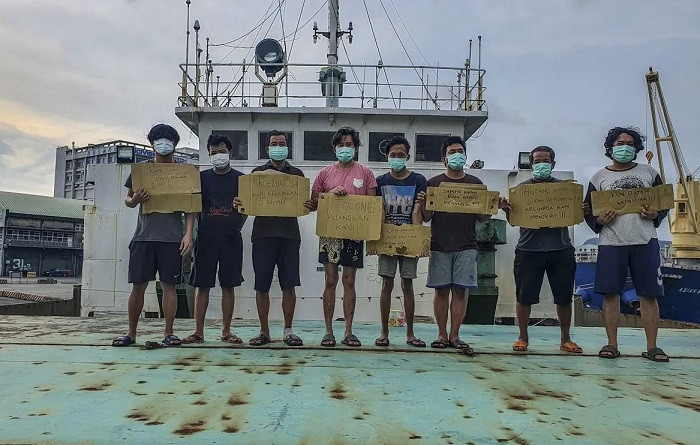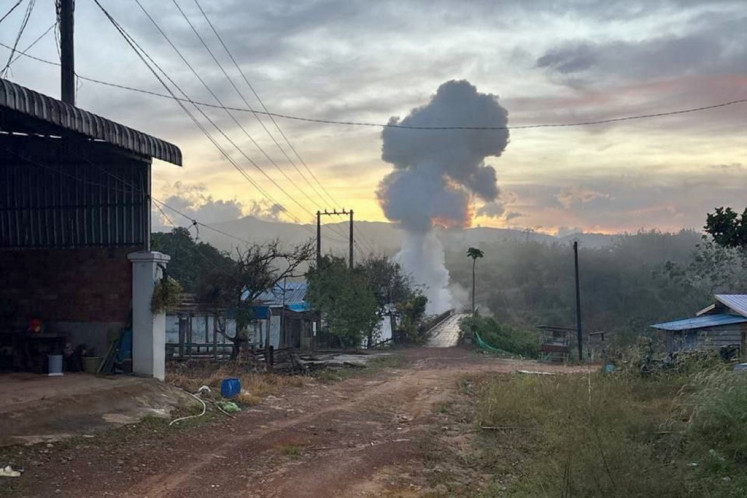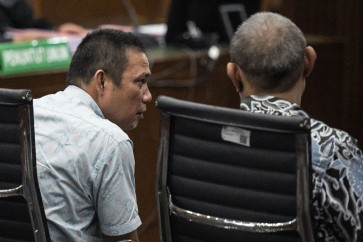Popular Reads
Top Results
Can't find what you're looking for?
View all search resultsPopular Reads
Top Results
Can't find what you're looking for?
View all search resultsHow AI can revolutionize asset seizure, the fight against graft
The use of AI in asset forfeiture is already a reality in countries where advanced analytics are used to identify high-risk transactions and complex criminal networks.
Change text size
Gift Premium Articles
to Anyone
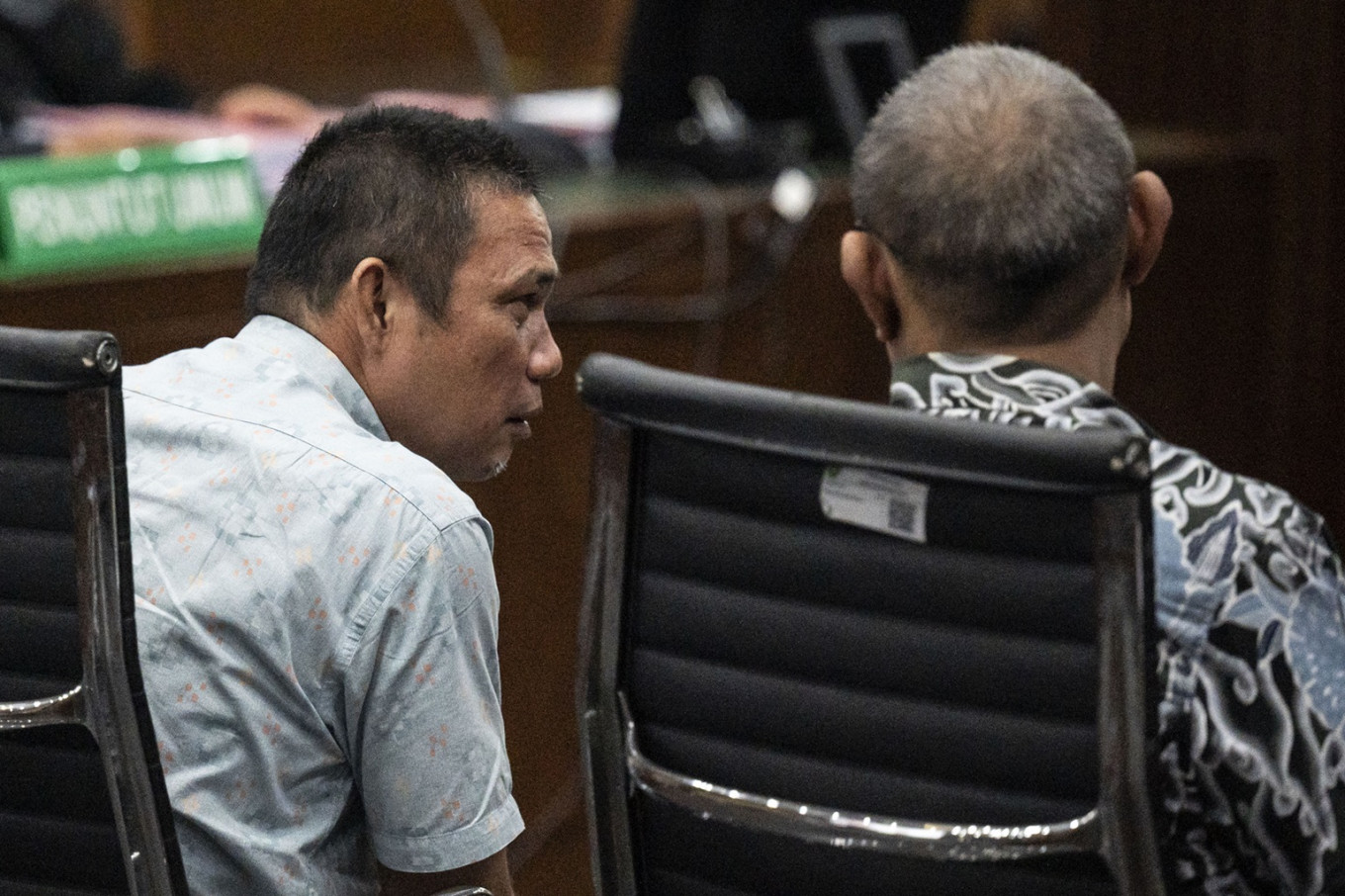 Former Bangka Belitung Islands energy and mineral resources agency heads Amir Syahbana (left) and Suranto Wibowo (right) sit in the defendants' chair at the Jakarta Corruption Court on July 31, 2024 during an indictment hearing pertaining to corruption in state-owned tin company PT Timah. Prosecutors charged the defendants, including a fellow former agency head Rusbani, of self-enrichment that caused Rp 300 trillion in state losses. (Antara/Aprillio Akbar)
Former Bangka Belitung Islands energy and mineral resources agency heads Amir Syahbana (left) and Suranto Wibowo (right) sit in the defendants' chair at the Jakarta Corruption Court on July 31, 2024 during an indictment hearing pertaining to corruption in state-owned tin company PT Timah. Prosecutors charged the defendants, including a fellow former agency head Rusbani, of self-enrichment that caused Rp 300 trillion in state losses. (Antara/Aprillio Akbar)
F
or the past five years, we have faced the painful reality that corruption is widespread in the country and the resulting state losses are astronomical. According to Indonesia Corruption Watch (ICW), the number of corruption cases and suspects has been consistently increasing.
In 2023 alone, there were 791 cases involving 1,695 suspects, with total potential state losses reaching trillions of rupiah, including a single mega-scandal involving state tin producer PT Timah that cost the state up to Rp 300 trillion (US$18 billion).
Despite this rampant corruption, our efforts to recover state losses through asset forfeiture have been deeply disappointing. Corrupt officials' assets seem to have an invisible "shield" that makes them almost impossible to seize. This fundamental weakness stems from two persistent legal obstacles.
First, our current process is conviction-based, meaning we can only seize assets after a final and binding court verdict. This slow process gives corrupt officials ample time to hide or transfer their ill-gotten assets, often to foreign countries or into hard-to-trace digital forms.
Second, the sheer complexity of the burden of proof rests entirely on law enforcement, which must strictly prove that seized assets are a direct product of the crime, a monumental challenge when assets are commingled or converted. Even worse, we have not fully or optimally implemented Article 37 of the 2010 Money Laundering Law, which permits the reversal of the burden of proof.
Ratifying the long overdue asset forfeiture law bill is therefore a crucial step forward, as it aims to fix these weaknesses by adopting a nonconviction-based mechanism. However, the bill itself will face challenges. Implementing this new mechanism requires a robust legal framework to prevent misuse and protect human rights, especially property rights. The articles defining “assets suspected of originating from a criminal act” and the fair trial procedures must be incredibly precise.
Additionally, the bill does not explicitly address the unique challenges of asset forfeiture in the digital age, failing to accommodate new forms of wealth like crypto assets, blockchain and non-fungible tokens (NFTs). This could create a new legal loophole as corrupt officials increasingly turn to technology to hide their gains. The articles defining forfeitable assets need to be expanded to explicitly include these new digital forms.



